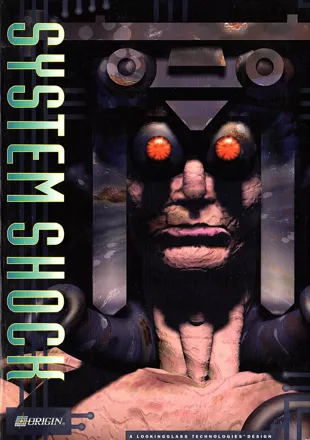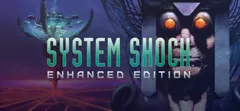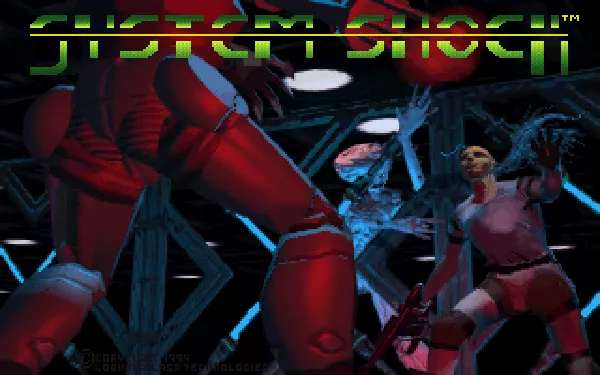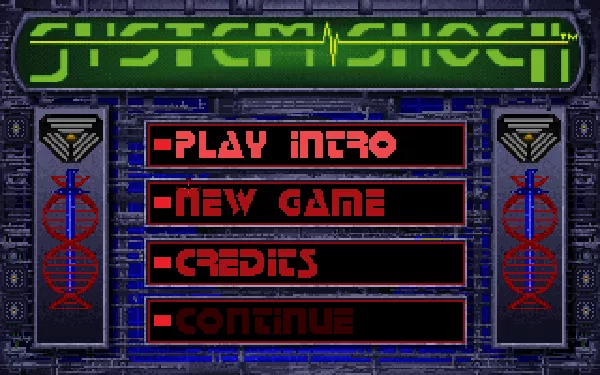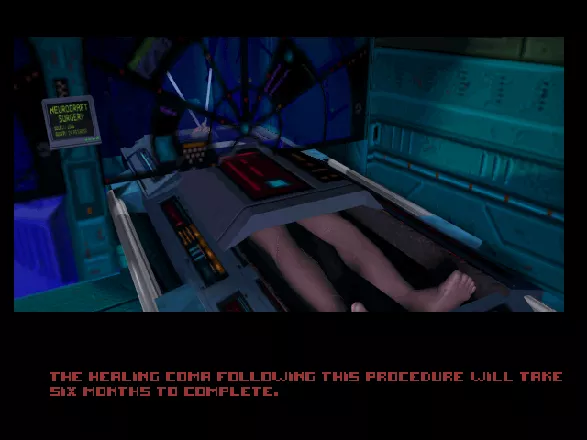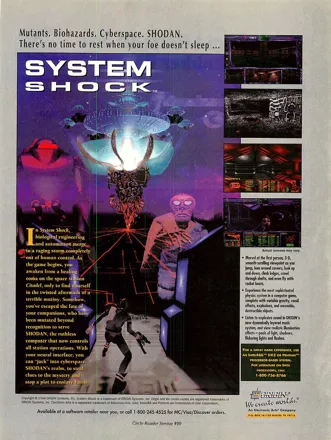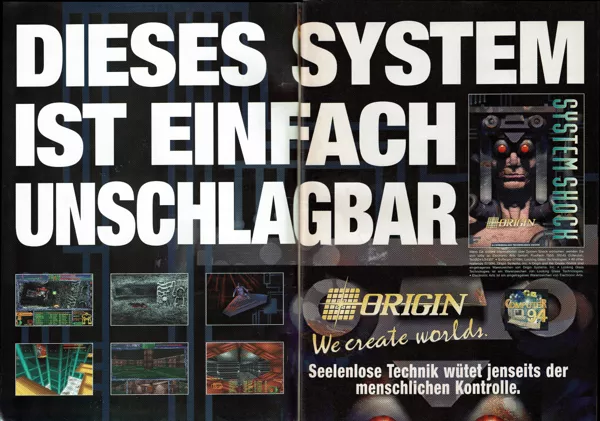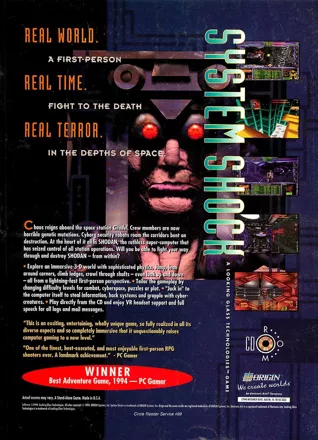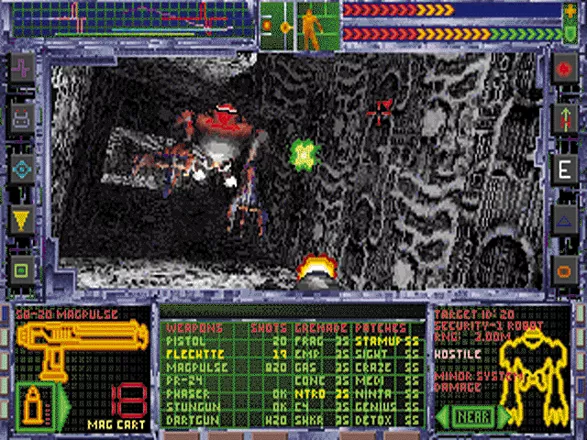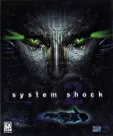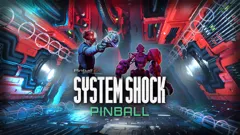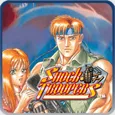System Shock
Description official descriptions
The year is 2072. A hacker from a Saturn colony breaks into computer system of TriOptimum Corporation and gets arrested. He is taken to the Citadel Station, where Edward Diego, a TriOptimum executive, offers to drop all charges against the hacker, as well as grant him a valuable neural implant, if he agrees to hack into SHODAN (Sentient Hyper-Optimized Data Access Network) , the artificial intelligence that controls the station. The hacker removes the AI's ethical constraints and undergoes the promised implant surgery, after which he is put into a six-month healing coma.
The hacker awakens into a horrifying reality: with her ethical restrictions removed, SHODAN took control over the station, reprogrammed all robots and machines to suit her needs, and disposed of the crew members by either transforming them into mutants and cyborgs, or killing them outright. Rebecca Lansing, a TriOptimum counter-terrorism consultant, contacts the hacker and informs him of an even more terrifying possible future: SHODAN's plan involves using the station's mining lasers to annihilate all life on Earth. The hacker must explore and traverse the desolate corridors and rooms of the large space station, fighting SHODAN's minions on his way to thwart her maniacal design.
System Shock is a first-person shooter with puzzle-solving and light role-playing elements. The gameplay incorporates gradual exploration of the Citadel's ten levels, interaction with the environment, problem-solving, fulfilling objectives, and combat.
On his way the hacker encounters numerous enemies - robots, cyborgs and mutants, all of which can be fought back with a variety of weapons. Some of the weapons use ammo, while other have infinite ammo and instead draw on electric energy. Some weapons are more effective on certain foes - e.g. the dart gun only works on organic enemies, while the magpulse is best used against robots. Once killed, the enemies can be searched for ammo and other items. The player can also find items in crates, cabinets, corpses or just lying around on the ground.
Apart from weapons and ammo, the player can find patches (such as medical patches, which replenish the hero's health; berserk patches, which temporarily increase his strength but cause hallucinations; detox patches, which remove the harmful effects of radiation and biohazard; etc.), grenades of various kinds (EMP grenades are effective against robots, gas grenades are good for mutants, land mines can be used to set traps, etc.), battery packs for replenishing electricity, first aid kits for restoring health, and others.
Thanks to the hacker's implant he is able to install various pieces of hardware into his body, such as a booster which makes him go faster, or a head lantern to bright up dark areas. As the player progresses in the game, higher versions of existing hardware are found, which are more effective and useful. However, most hardware uses up electric energy while it is active.
At some places in the game, the player has to find a wall-mounted "cyberjack" to go into cyberspace in order to find helpful data, remotely open doors or unlock sealed areas, or give himself clearance to access off-limits areas. Cyberspace is represented as a 3-D wireframe place, where the protagonist floats around freely in three dimensions, shoots hostile cyber-guards with phasers, and collects files represented as colorful cubes.
The story of System Shock is mostly told through e-mail messages the protagonist received, and electronic diaries (logs) left by various characters (as well as SHODAN herself), which are scattered around the space station. The game features separate adjustable difficulty settings for combat, mission objectives and puzzles. The CD version of the game includes full speech for e-mails and logs, as well as higher-resolution, more detailed graphics.
Spellings
- システムショック - Japanese spelling
- 시스텡쇼크 - Korean spelling
Groups +
Screenshots
Promos
Credits (DOS version)
65 People · View all
| Project Leader | |
| Designers | |
| Lead Programmer | |
| Programmers | |
| Libraries | |
| [ full credits ] | |
Reviews
Critics
Average score: 89% (based on 23 ratings)
Players
Average score: 4.0 out of 5 (based on 195 ratings with 22 reviews)
One of the best FPS RPGs of all time; intelligent, scary, immersive, and compelling.
The Good
Compelling plot, strong sense of an intelligent adversary (it doesn't just wait for you to come kill it, it sets traps and ambushes), separately adjustable difficulty for combat and puzzles. Convincing 3-D world with working cameras, variable gravity, real projectiles, movable objects. Wide variety of weapons. First game with a "cyberspace" for hacking. Some of the traps were so scary that I screamed out loud. WAY ahead of its time. System Shock doesn't just rule - it rules from orbit.
Note that some of the voice features of the game were not in the original release but were appeared in a later enhancement - these add a lot to the experience and you should make sure you have them. (The Mac port includes these.)
The Bad
The monsters are not really 3-D but just 2-D projections which vary with angle, so their motion is jerky and close up they look a little low-res. You get messages from other survivors, but there is no way to rescue any of them and they always have to die. The cyberspace is rather simple visually (kind of "wire frame"). A remake of the game with better graphics and rescuable AI NPCs would be awesome.
The Bottom Line
This is on many lists of top games of all time. It's STILL more worth playing than 99% of the games written a decade later. I found this much more enjoyable, for example, than Half Life or Half Life 2.
DOS · by Howard Landman (5) · 2009
Welcome to Citadel Station, insect, where I, SHODAN, will make your life a complete misery
The Good
System Shock was the first Looking Glass game I played, and it remains one of my favorite games of all time. When Night Dive Studios acquired the rights to the series a while ago, they released an enhanced edition of the game, featuring widescreen support and various game fixes. Soon after, they also launched a Kickstarter for the remastered version to be released in 2018, and this was successfully funded. The reception to this remaster was very positive, and I celebrated this piece of news by revisiting the original game from 1994.
Inside the box, you get a install guide and reference card, as well as an advertisement for the System Shock I.C.E. Breaker, Origin's own strategy guide for the game. Also, you either get nine floppy disks or the enhanced CD, and the manual (dubbed “Terminal Access”) which features information regarding the game mechanics , a guided tutorial, and some more story details. If you have the pirated version of the game at the time, it was worth buying the game at a computer store just to get a copy of these freebies; but these days, you can always purchase the Enhanced Edition from GOG or Steam.
System Shock takes place in the year 2072, where a hacker is caught trying to access the computer system at TriOptimum Corporation, a massive corporate monopoly focusing on research, defense, and commercial manufacturing. Edward Diego, the arresting officer, offers to drop all charges against him if he does a little job: hack into SHODAN, the super-computer that controls Citadel Station. After SHODAN is hacked and its ethical constraints removed, the hacker is taken to Citadel where he is put into a healing coma on the station's Medical level, to be injected with a military-grade cybernetic implant.
He wakes up six months later only to find that something horrific has happened. Crew members were either slaughtered, or converted into mutants or cyborgs, and it is believed that SHODAN was responsible. As the hacker, your job is to find out what's going on and get to the bottom of it. You can pick up a few goodies to help you get started, including a basic weapon that will deal with the first few enemies you encounter, as well as a multimedia data reader that you can use to access e-mails and logs. The data reader forms part of your hardware upgrades, and there are further upgrades you can get throughout the game.
System Shock uses an advanced 3-D engine and incorporates features that were not found in generic first-person shooters, such as the ability to look around, change your perspective, leap across gaps, and crouch. Much of the game is spent cycling between different interfaces, and the game can be controlled with the keyboard or mouse. I found it much easier to cycle between interfaces using shortcut keys and doing the rest with the mouse. There are two multi-function displays on both sides, and you can choose the type of information that you want displayed. I like to display the automap on the left MFD, so that I can keep track of where I am going, and what areas of the level that I have not explored yet.
The game is packed full of atmosphere. As you explore the station, you can hear doors opening and closing, and hear the occasional “robot chatter”. It also feels as though SHODAN is watching your every move as she blocks your access to certain areas on each floor, warns you not to enter a certain room, and sends reinforcements to your location the more cyborgs you kill. There is nothing quite like walking around in a room in total darkness, hearing robot sounds every five seconds, and possibly hearing taunts from SHODAN.
Also adding to the atmosphere are e-mails and logs that also play an important role since they tell you about SHODAN's latest plans and how you go about disrupting them. Most of the communication comes from logs made by crew members detailing what was happening on the station and what they were doing moments prior to their deaths. I enjoyed listening to the logs made by Bianca Schuler, who had plans to use the isolinear chipset to deal with SHODAN, and managed to make her way to level nine before Diego finds out and has one of his cyborgs execute her.
System Shock lets you customize the game to your own satisfaction, by modifying different settings related to certain elements such as combat, puzzles, and plot outlines. Don't like rewiring things that allow you to bypass locks and other exciting stuff? Sure, have the game do it automatically for you. Want to explore areas without the threat of enemies firing on you? Walk around Citadel Station undetected and explore at your own free will. Don't like to play games that can take days or months to complete? Impose a seven-hour time limit on yourself, and see the introduction and ending in just one sitting. You can do this configuration before the game starts, not while you're playing it. So if you just begun a new game and realize that you made a mistake, then that's too bad.
There are sixteen weapons in the game, and some of these are more effective against certain types of cyborgs. There are often two sets of ammo for each weapon, and ammo is in abundance so you can never run out of a certain type. A few weapons use up no ammo at all, instead relying on energy cells to work; and since you run out of energy every time you make use of these weapons, it is important to use an energy charge station scattered throughout the levels. Explosives can also be picked up and used if you want to save ammo, and this is ideal for killing enemies that are in a limited area.
From time to time, you have to “jack” into cyberspace, and this is where you can get software upgrades and push switches that will unlock certain areas in the real world. You can also enter data streams that lead you to different areas where you will meet enemies that become aggressive the further you progress through each level, even going so far as appearing the moment you enter cyberspace. I like the way you can see different partitions from inside the one you're in, showing you what you can expect later. And if you're lucky, you will also be able to download mini-games to your interface and play TriOp's take on Space Invaders, Pong, and Tic-Tac-Toe.
I have to say that the level design is brilliant as well. The walls and floors are unique, and each level is structured differently, but they have one thing in common: the four quadrants in the middle that you need to explore. My favorite bit of level design is the Security level, where there is this central shaft that you have to go up through to reach the Bridge, then before you go through the last door, you can look down quite a distance to where you started. I wish that most of the levels were like this.
The soundtrack for each level is brilliantly composed, and it varies depending on your actions like doing combat with an enemy or walking through an area. Because of this variation, you won't probably get to hear the full soundtrack unless you pause the game. Some of the soundtracks are creepy as well, such as the ones heard when you explore the groves on the Executive level.
The CD version of System Shock adds full speech for the e-mails and logs, delivered by Looking Glass employees. The background noises during these audio transmissions are impressive. When SHODAN speaks, for instance, you can hear sirens in the distance. This version also adds a new install program and adds more resolutions other than 320x200, so that the graphics and text will be much clearer. Since the CD version is far superior to the disk version, LG suggested that the CD version should be a separate game, but Origin wouldn't allow it.
The Bad
There are some gameplay issues that I found annoying. I found myself running out of ammo at a crucial time such as dealing with enemies. Since there is no automatic reload, I found myself going into the weapons interface and either selecting another weapon or do a manual reload, giving the enemies more of a chance to turn me into a cyborg. Also, there are a few areas that have only one door “broken beyond repair”, which is a waste of map space, in my opinion.
The Bottom Line
System Shock tells the story of a hacker trying to stop SHODAN and her plans to destroy Earth. In order to get to her, tasks must be performed to thwart her experiments which will ultimately destroy Earth. There are ten levels which the player must explore fully for any cameras or hidden passages. Cyberspace must be entered to get additional information and unlock doors in the real world.
Everything about System Shock is futuristic – the graphics, music, and sound effects. The highlight of the game has to be listening to SHODAN's voice, ordering her children around. There are two versions of the game: a disk version and an enhanced CD-ROM version. By playing the CD version of the game, I felt that its full speech gave some depth to the game. There are differences between the dialog and the spoken text, and for that reason, I wished that I had played the disk version first.
Even if you're got an pirated copy of the game, it's worth it to go grab a legit copy just to get the cool stuff inside it; and if you can't, you can purchase the Enhanced Edition from GOG with everything included. As mentioned in the introduction of this review, there is a remastered version in the works, but will it be any good?
DOS · by Katakis | カタキス (43091) · 2016
Gameplay, atmosphere, and storytelling in an amazing union
The Good
For many years, I refused to play this game. That was because I wasn't interested in games in which the player is trapped in one location and has to fight monsters without being able to talk to anyone.
I'm still not particularly interested in such games. It took me an extremely long time to get into System Shock. It's a tough game because it offers you so many possibilities and such rich gameplay from the get-go, while being confined to one location only, the space station. To be honest, I can't handle this game very well even now. It is devilishly addictive and deeply claustrophobic, and not all feelings it evokes are positive. After a session with System Shock I feel tired and overwhelmed. I can only play it in small portions and with long rests.
The greatness of System Shock lies in the fact that it blends all the main aspects of game design like no other game before and only very few after. Every part of the game - be it the meticulous interaction with objects, the ominously appealing visuals and the eerie music, or the gradual discovery of the past struggle against Shodan - is so flawlessly integrated into each other, that when you begin playing System Shock you feel as if you were swallowed by some powerful entity with rules of its own. Maybe it's a strange thought, but I find the game not entirely dissimilar to the memorable villain it portrays.
Atmosphere is a decisive factor in the game. Even with the limited technology, the designers managed to create a noticeably more sensual, immersive product than the already groundbreaking Ultima Underworld titles. System Shock draws you into its world with a force that some people might find nearly terrifying. You can read here on MobyGames another review of this work, in which the author confesses that the game has affected him mentally, causing him to have nightmares. I don't think he is exaggerating. I've played many games in my life, including some with extremely horrifying and disturbing material. But System Shock is one of the very few that forces me to mentally prepare before I begin playing it. You are pulled in with such intensity that the world of the game becomes your world.
The story here must be "felt", lived from within the game. When written down on paper or told to someone, it loses its meaning. It is basically a story with two characters, the protagonist and the antagonist, the female computer Shodan. The whole idea of the plot was to show how a regular human being (and not a particularly virtuous one - after all, the hero of the game is a hacker, a kind of burglar) single-handedly defeats a mighty artificial intelligence. You and Shodan develop a morbid kind of relationship over the course of the game. Shodan keeps intimidating and teasing you, adding even more horror and stress to your perilous exploration. She is so arrogant and so sure of herself that she doesn't get angry, she is always calm and even sounds indifferent, and that's what is so scary about her. Shodan becomes a part of your life, and there is something creepily intimate in her constant interaction with the player. The way she would suddenly send you e-mails and talk to you can get genuinely disturbing.
The game world is, in a sense, another big enemy of the protagonist. Finding your way through the ultra-complex space station, solving its riddles, finding the items you need, gathering information, struggling against the hordes of enemies Shodan sends at you - the story of the game is directly experienced by the player, and let me assure you that it is a dramatic and intense one.
But of course, the highlight of the story is the revolutionary "retroactive" storytelling. Basically, besides the story that unfolds now, in front of our eyes, there is another story in System Shock: the one that happened before we arrived. You unravel it by reading logs left by the crew members. This idea is pure genius, because this way storytelling truly becomes an integral part of the gameplay. Finding out what happened by actively searching for information is exciting. You learn about the tragic fate of the people who once inhabited the space station. You get to know them when it is already too late. The beauty of this is the purely gameplay-bound, optional nature of the plot. It is not being forced on you like in most other games, but emerges when you make full use of the gameplay mechanics offered to you. This is one of the rare instances when a plot device is truly unique to the medium: something quite different from cutscenes and more than snippets of text feedback, this mechanic gracefully escapes the influences of books and movies.
The gameplay of System Shock was not only revolutionary for its time - it is still unsurpassed by most games. The it manages to stay suspenseful and tight while at the same time allowing you to interact with everything and explore is yet another testimony to the game's genius. Following the tradition of Ultima Underworld, the interaction in the game is incredibly refined. You can pick up nearly everything you see, you can smash and throw things - almost nothing of what you see is a mere decoration, everything can be interacted with in this or another way.
The level design is another brilliant aspect of the game that contributes to its great gameplay. Despite being set in only one location, System Shock is a very non-linear game in the sense that the way through the game is not shown to the players. They have to find it by themselves, and this is perhaps the biggest challenge of the game. Each level in System Shock is absolutely huge and very complex. Since you can usually choose any path you want during your exploration, the levels turn into small "worlds" that have to be explored, learned, understood, and completed (there are usually one or more main objectives on each level, plus several secondary ones) to proceed. The exploration process is a delight in its own right.
System Shock is also quite awe-inspiring from a technological point of view. Of course, it couldn't be as fast as Doom, but it blows it out of the water when it comes to level design and interaction made possible by the engine. All the revolutionary features of Ultima Underworld games now come in full 3D. Everything you do in the game is shown as a graphical effect - tossing things on the ground you can see how they bounce, and it is simply incredible that such an effect was achieved with such an early, primitive physics system. When you smash things, it is visually displayed. The level design is not only creative - it is also technically astounding, with objects everywhere, and a huge amount of detail stuffed into every place you see.
I loved the difficulty level system. Basically, you are allowed to customize every aspect of the game. Want to solve tricky puzzles but feel inept in combat? You can choose the puzzles to be hard, and the combat easy. Satisfied with the overall challenge, but can't adapt well to the cyberspace? No problem, just leave everything on high difficulty, but put cyberspace all the way down, making it a nearly automatic journey. Like moderate challenge in everything? Be my guest. The game can fully suit your needs, whatever they might be. I really can't understand why other games haven't implemented this system.
The Bad
Like any other early 3D game, System Shock doesn't go easy on the eyes, and its graphics haven't aged very well. This is not a criticism, but rather an inevitable side effect. I know people who couldn't get into the game for this reason, even though they loved the sequel. I also played the sequel before the original, and my enjoyment was somewhat reduced because of that, especially in the beginning.
The part that really annoyed me was the cyberspace. It took me ages to figure out how to move in that place. I was constantly struggling, and in the end simply avoided it whenever I could. Fortunately, most of those trips are optional.
There is a certain monotony in the level design of System Shock. You are confined to an admittedly huge, but homogeneous location, with many architectural elements repeating themselves regardless of the floor you are currently exploring. The darkly tense atmosphere and the overbearing presence of machinery and electronic enemies at the expense of friendly organic creatures can be hard to stomach.
The Bottom Line
In retrospect, it looks like System Shock was one of the very few games in the history that managed to be a daring experiment and a perfectly crafted, balanced product at the same time. It is strikingly advanced on both technological and artistic levels, without sacrificing one for the other. Gameplay, atmosphere, and story-telling reach a remarkable unity in this game. Breaking through genre barriers, sending a powerful signal far into the future, System Shock is a masterpiece in every sense of the word.
DOS · by Unicorn Lynx (181775) · 2015
Discussion
| Subject | By | Date |
|---|---|---|
| Video review | DJP Mom (11333) | Oct 21, 2010 |
| Finally completed | Unicorn Lynx (181775) | Oct 18, 2008 |
| Voices? | Unicorn Lynx (181775) | Apr 3, 2008 |
Trivia
CD version
The CD-ROM version adds SVGA modes, full speech for e-mails and logs, slightly improved intro/end sequences and a few other adjustments and additions.
Ending (Spoiler!)
If you engage the mining laser BEFORE activating the station's shields, then you'll destroy earth! And guess what? Shodan sends you an e-mail thanking you and inviting you to a celebration! The e-mail also includes a nice picture of a city being incinerated, but unfortunately the game restarts afterwards, so no robo-party.
Engine
System Shock's engine was derived from that of Ultima Underworld, from 1992. Nonetheless it was more advanced that that of Doom or Duke Nukem 3D, featuring sloped surfaces, variable gravity, realistic physics, '2.75d' environments (with limited 'sector-on-sector', but otherwise 3D), functional camera viewscreens, weapon recoil, leaning and several other clever things.
References to the game
- During the end-game sequence, you hack into another corporate computer to grab some data. The data is info on some powered battle armor, which made its way into Terra Nova: Strike Force Centauri..
- In the end sequence, the hacker breaks in the corporate network of a corp. called 'Tetracorp'. In System Shock 2, the name tetracorp is printed on a generic two-state switch. Kinda rough change of business..
- It is hinted in the Wing Commander and Crusader games that they are set in the same universe as System Shock. For example, an article in a "newspaper" from the Crusader: No Remorse box mentions an artificial intelligence and the Citadel station.
References
- The Hacker's employee number, 2-4601, is a reference to the inmate number of Jean Valjean, the protagonist in the novel Les Misérables.
- There is a reference to the movie Soylent Green in the game (although it's spelled slightly different). In level 3, Maintenance, there is a relay panel in the northern section called "Soylant Green Filtration".
Sequel
There were rumours of a possible sequel, soon after System Shock's release, but fans had to wait five years for System Shock 2.
Awards
- Computer Gaming World
- November 1996 (15th anniversary issue) - #98 on the “150 Best Games of All Time” list
- GameSpy
- 2001 – #24 Top Game of All Time
- GameStar (Germany)
- Issue 12/1999 - #15 in the "100 Most Important PC Games of the Nineties" ranking
- PC Gamer
- April 2000 - #43 in the "All-Time Top 50 Games Poll"
- Power Play
- Issue 02/1995 – Best Action-Adventure in 1994
Information also contributed by Adam Baratz, Ashley Pomeroy, dasfatso, DreamWeaver, PCGamer77, Stefan Pieratzki and Zovni
Analytics
Upgrade to MobyPro to view research rankings!
Related Sites +
-
Other Worlds - System Shock
official page of the game at Origin System's website, archived from 1998 by the Wayback Machine -
TTLG: The System Shock 1 Fansite Hub
Through The Looking Glass' System Shock section.
Identifiers +
Contribute
Are you familiar with this game? Help document and preserve this entry in video game history! If your contribution is approved, you will earn points and be credited as a contributor.
Contributors to this Entry
Game added by xroox.
PC-98, Macintosh added by Terok Nor.
Additional contributors: Patrick Bregger, Rik Hideto, MrFlibble, firefang9212, somato.
Game added January 6, 2000. Last modified February 19, 2024.
